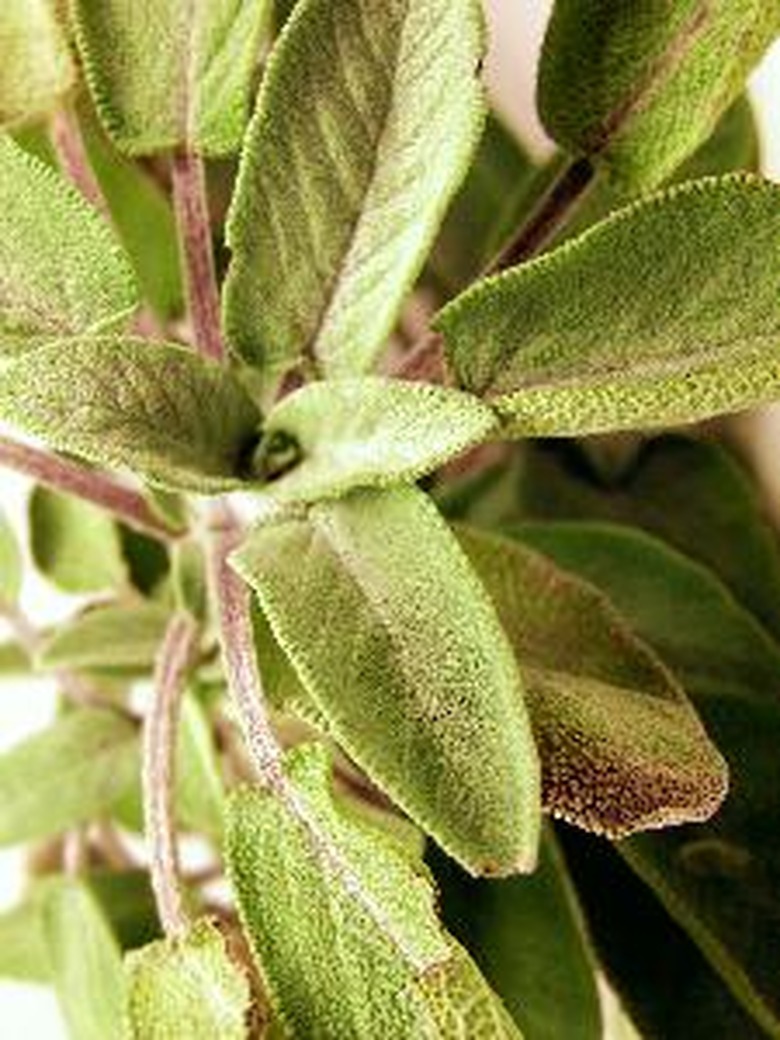Why Is My Sage Plant Wilting?
Sage is a perennial garden herb popular to many as an easy plant to grow. So when, on the rare occurrence, the soft perfumed leaves wilt and even shrivel, it can be alarming to the home gardener. There are several causes for this, one simply being old age. Others include a fungal infection, or maybe the climate is too cold — it is a Mediterranean plant — or there is not enough water in the soil. Check out the basics to see if there is anything you need to do to save your sage.
Dry Soil
Dry Soil
Dry soil is one of the simplest problems to remedy when it comes to sage leaves wilting. Although sage plants tolerate the heat well, they still need enough moisture in the soil to keep up with evaporation on hot days. Water the soil, not the plant so that the roots get the water. Use a small shovel to check the soil at a depth of 6 inches to see how dry it is at the root level and add more if necessary. Only water during periods of severe drought.
Fungal Infection
Fungal Infection
Break open a stem on a wilted branch to check for verticullum wilt, a fungus famous for affecting woody perennials. You should see a section of brown instead of a bright green center. This fungus grows rapidly during seasons of cool weather in the growing season. Water generously and add a fertilizer high in potassium and low in nitrogen to your soil. Unfortunately, this fungus comes from the soil and is hard to get rid of, so a total destruction of the sage plant might be inevitable. Look for resistant varieties or plant your sage in a new location.
Cold Temperatures
Cold Temperatures
You might not realize that some types of sage plants are annuals since they are not hardy in cold temperatures. These plants will wilt and dry up over the winter months if the temperatures go below freezing. Wait until spring to see if the roots have survived and then prune away the dead leaves. Try mulching the plant with several inches of leaf mulch in the fall to protect it from winter injury in moderate climates. Another cure is to grow a tender sage plant on the sunny, south side of buildings where it is generally warmer.
Old Age
Old Age
A simple consideration when it comes to wilting leaves on your sage plant is age. Often the center of the plant becomes too woody and growth is stunted. Any stress like hot weather will likely kill off sections of the plant. Take some cuttings from tender new growth and start new plants before the whole plant dies. Sage roots easily from cuttings and your new plants will grow from three to five years before they need replacing.
References
- University of California, Division of Agricultural Sciences; Plants Susceptible to Verticullium Wilt; Arthur H. McCain
- Purdue University; US Department of Agriculture; Savory Herbs Culture and Use
- North Carolina State University; Winterizing the Herb Garden; Linda Blue; Jan. 1999
- Purdue University Cooperative Extension Service; Growing Herbs; Kate Copesy; Jan 2002
